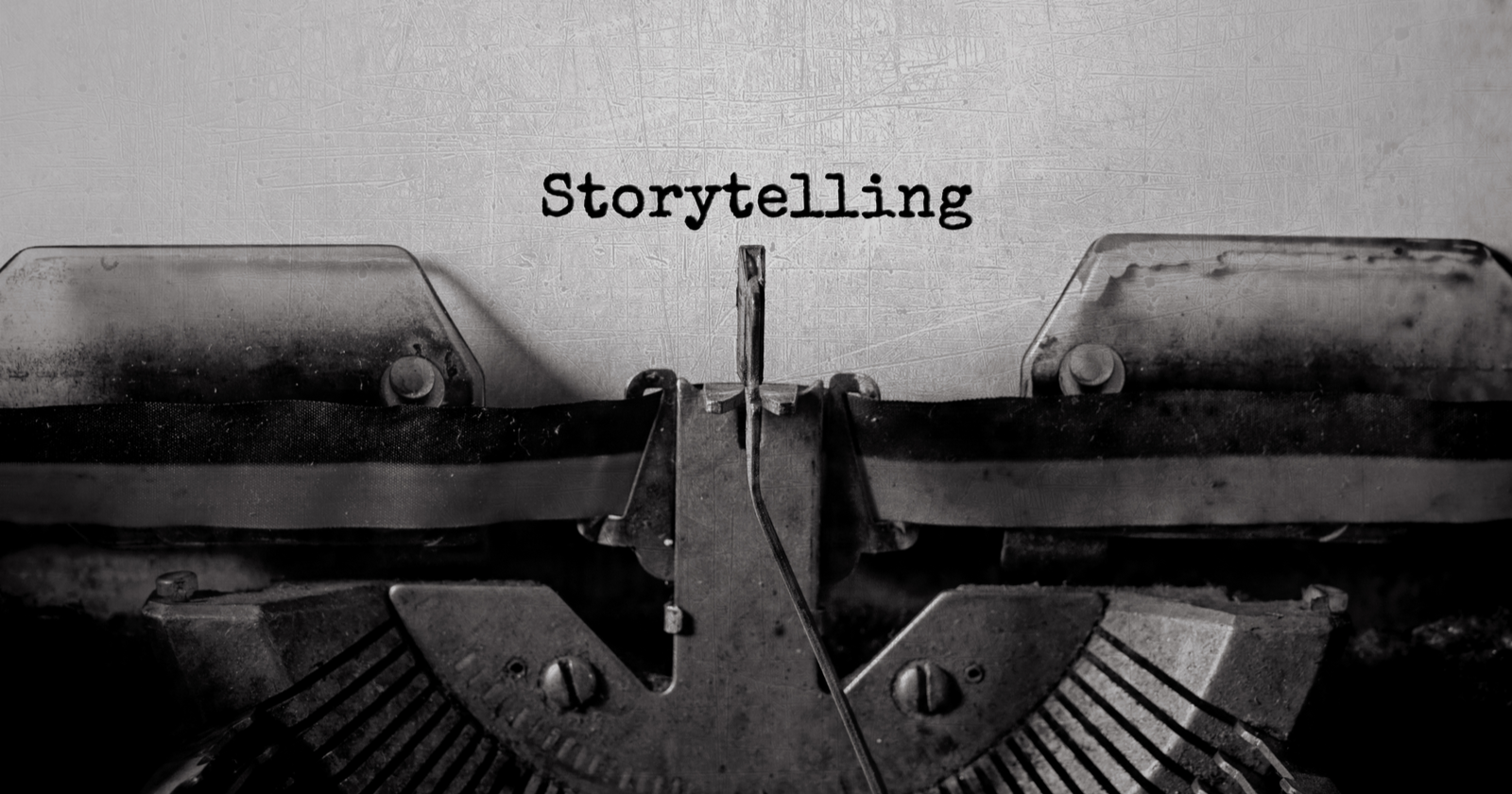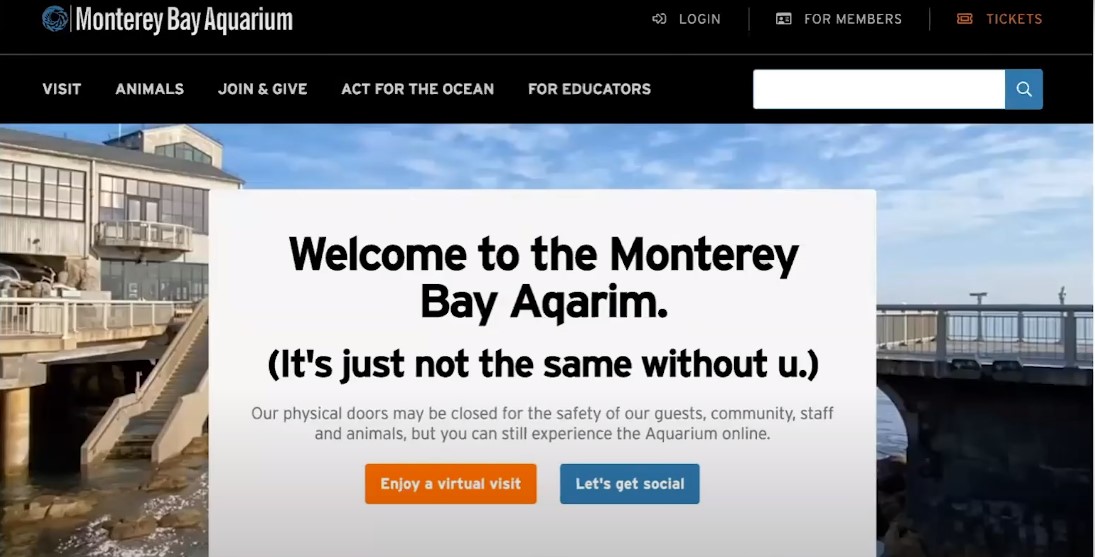These are weird times to be in marketing.
It’s business as usual at exactly zero companies.
That’s true no matter what you do or what you sell – B2B, B2C, SMB.
Everything is suddenly, confusingly different.
So, what’s the path forward?
What do the current times mean for you, your business, and your customers?
For her SEJ eSummit keynote, Ann Handley, Chief Content Officer at MarketingProfs, shared why having a clear and unflinching focus on your story will set you apart during these times.
She also tackled seven non-negotiables your storytelling must do and the best tactics for connecting with customers right now.
Here’s a recap of her keynote.

The COVID-19 is forcing us to be a little bit more creative in how we’re connecting with one another.
Advertisement
Continue Reading Below
The same is true in marketing today.
We have new opportunities to connect with customers at a different level.
And the key to doing that?
Storytelling.
But not the same old way that we’ve always been doing.
We have to rethink how to tell our stories during the pandemic.
The Best Strategy Is A Story
The best way to connect with someone is always through a story.
Why?
It’s because stories make things like solutions and applications feel a lot more accessible.
To prospects and customers, they make big ideas more human-sized.
There’s no one way to write or tell a story. But in its simplest form, a story has these elements:
- A hero we can relate to. The hero is not your product or your service. It’s your prospect or your customer.
- A villainous challenge. The hero encounters a difficulty and they need help.
- An epic struggle to resolution. The struggle that you can help them with to get to resolution.
In the times that we find ourselves living in right now, that struggle is all the more epic because the outcome is not at all certain.
Advertisement
Continue Reading Below
We live in unprecedented times.
You’ve probably heard that a million times.
The outcome is far less certain and, at the same time, the stakes are higher.
We have no idea how this is going to play out.
The real struggles that our customers have are different now.
That means we need to rethink things a little bit, but not everything changes.
Two things did not change in the COVID age:
- Your purpose: Your why – why you exist – and what you do to help the people who you want to connect with the most.
- The hero: That hero never changes. It’s the prospect you want to help.
One thing does change, and that’s how we tell the story.
Reminder: It’s OK to Market Right Now
It’s more than OK to market right now.
We have a responsibility to continue and keep the world moving.
It’s OK to talk about your own products and services.
It’s also OK to talk about how they help your customers the most in marketing.
Attention vs. Trust & Affinity
Marketers spend a lot of time thinking about how we can grab somebody’s attention.
But this is the wrong way to think about marketing, especially now.
Instead, focus on how you can earn your prospect’s trust.
How can you be a partner to them?
When customers are thinking about what solutions you have or how you’re telling that story, they’re thinking of you through two lenses:
- Trust: “Do they understand my problems best?”
- Affinity: “Do I like them?”
Trust and affinity are so undervalued in marketing, especially in the B2B space.
7 Non-Negotiable Things Your Storytelling Must Do Now
Here are seven things you can do right now that will deliver that trust and affinity for years to come.
1. Scale Camaraderie
You want to create that affinity and trust, not just with one person at a time, but more broadly.
Advertisement
Continue Reading Below
So how do you use story to scale camaraderie?
Here’s what Jack Daniels did at the start of this pandemic.
When everyone was in lockdown, they took the opportunity to remind people through this video that it isn’t about alcohol at all.
Instead, it’s about the way that people communicate with one another – how they celebrate and socialize with one another.
At the end of the video, a message pops up:
Dear humanity,
Cheers to making social distancing, social.
With love,
Jack
It’s embedding the idea of Jack Daniels with the fundamental aspect of people’s need for socialization.
People need to connect and the brand can help that happen.
IKEA talked about the same themes in their campaigns.
They released their famous Swedish meatball recipe to anybody who wanted it.
Advertisement
Continue Reading Below
Missing your IKEA meatball fix? We’ve created a recipe for you to recreate this delicious dish in the comfort of your own home #IKEAmeatballs pic.twitter.com/d89lRsJxH7
— IKEA UK (@IKEAUK) April 20, 2020
You can’t come into IKEA’s stores?
But you can still have their meatballs in the comfort of your home.
That’s a simple yet powerful gesture.
IKEA also came up with instructions on how to build furniture forts for parents quarantined at home with their kids.
— Big_lebowski (@mini_lebowski) May 16, 2020
IKEA is reminding their customers that they are in it with you.
It’s not just about them marketing to you, but it’s saying, “We’re all in this together.”
We’ve heard that a lot from brands, but these are two examples of brands that are really embodying it and that’s the story that they’re telling.
These two brands are communicating and marketing to customers as peers.
Advertisement
Continue Reading Below
Their messaging says it all:
“We understand it. We get you. We’re social distancing, too. We’re quarantining right along beside you.”
Arne Sorenson, CEO of Marriott International, did something wonderful in April.
The hotel chain had to make some tough decisions about furloughing many Marriott employees.
They could have done what any other company out there did – just issue a press release.
But instead, Sorenson got on camera and delivered this five-minute talk which they released on Twitter.
He spoke from his heart about how devastating this is for him and the company.
A message to Marriott International associates from President and CEO Arne Sorenson. pic.twitter.com/OwsF14TZgb
— Marriott International (@MarriottIntl) March 19, 2020
Genuine talk from the CEO of this massive company made such a difference to how Marriott played out long term.
It’s a great example of what we hear all the time:
Show, don’t tell.
Show customers how you feel about something.
Think about how you’re telling the story – the words and the voice you’re using to tell your story.
Advertisement
Continue Reading Below
2. Focus on Deepening Existing Relationships
Think about the broader story that you’re telling.
How do you actually deepen those relationships with the people who matter the most to your business?
MarketingProfs recently did this when they launched an exclusive Facebook group for paying members.
They wanted to give B2B marketers an opportunity to connect with one another in a place where they could support each other and offer resources.
They also created two new special programs that anybody could take.
Another great way to deepen existing relationships with your community is to launch a newsletter.
The inbox is a place that’s vastly undervalued by so many organizations the inbox.
Morning Brew launched this newsletter called The Essentials, which is sort of a popup newsletter to help us people navigate quarantine together.

Why did they do that?
Advertisement
Continue Reading Below
Because it’s an extension of their belief that newsletters are a great place to connect with audiences and also deepen those relationships with their existing subscribers.
3. Short-Term Actions to Reflect New Realities
What are the short term programs that you can put into place that will be there for people right now?
Jess Tyson, CEO of virtual assistant agency Don’t Panic, decided to be there for her community by offering them short, one-off engagements to people who needed help with very specific things.
Typically that kind of service wouldn’t be available more broadly because they usually sell longer-term commitments.
But, in this case, Don’t Panic Management said, “how can we actually be there for people at a time when people are apprehensive about making long-term commitments?”
And so they came up with short-term solutions.
No contracts, no commitments.
My team and I are always looking for new ways to help. That's why @dontpanicmgmt is offering hourly packages for businesses that need an extra set of hands RIGHT NOW. Check it out: https://t.co/XvDRDEAkgP #SmallBiz #SmallBizRelief #Entrepreneur #virtualassistant #VirtualEvents pic.twitter.com/Pxczl8xIDh
— Jess Tyson (@jessostroff) April 6, 2020
Advertisement
Continue Reading Below
4. Long-Term Leadership
What are the things that you can do now to demonstrate long-term leadership within your own community?
Toast is a company based in Boston, Massachusetts that sells point of sale and management solutions to restaurants – an industry that has been hit super hard by the pandemic.
So Toast came up with this micro-site called Rally for Restaurants.

The point of this was initially customer-facing.
In the beginning, they offered consumers an opportunity to buy gift cards from some of their favorite restaurants to give them a “microloan” or a sort of lifeline as they describe it
Quickly, this evolved to be something completely different – they became a resource for restaurants that are trying to navigate these times.
Ask yourself:
- How are you able to evangelize your own industry at a time like this?
- How do you actually think about what you’re doing now as a longer-term play instead of only serving your own business?
Advertisement
Continue Reading Below
5. An Element of Unexpected
Don’t do what everybody else out there is doing and be a copycat brand.
Many museums have done virtual tours, but what the Getty Museum did was outstanding.
They challenged their followers to recreate a work of art with objects that people found in their home and share them on social media.
We challenge you to recreate a work of art with objects (and people) in your home.
🥇 Choose your favorite artwork
🥈 Find three things lying around your house⠀
🥉 Recreate the artwork with those itemsAnd share with us. pic.twitter.com/9BNq35HY2V
— Getty (@GettyMuseum) March 25, 2020
So much great stuff came out of this and made the whole Getty collection more accessible.
Crisis fertilizes creativity.
Think about ways to do things differently.
6. Meaningful, Manageable Relevancy
You don’t have to be big to do meaningful things.
You can do small things that are more consistent with the size of your brand.
Ahava Leibtag runs Aha Media Group, a content agency in Washington D.C.
Advertisement
Continue Reading Below
Leibtag’s agency is in the business of making language simple, plain, and actionable for the healthcare community – and they did just that when they rewrote the COVID-19 guidelines in plain language.
We rewrote the #Covid_19 guidelines in #plainlanguage so Americans could understand them more clearly. See the before and after. @CDCDirector @CDCgov @HHSGov @HHS_ViralHep @WhiteHouse @Surgeon_General @SecAzar pic.twitter.com/K6ACNMZosl
— Ahava Leibtag (@ahaval) April 7, 2020
7. People
Make sure that you are showcasing your customers and the employees who work at your company to the degree that you can.
Rothy’s incorporated this approach in their marketing.

On the top of every email, they talk about how they’re grateful to their community before they start selling.
Underneath it, they’re still selling their products, but they’re doing it in a way that they’ve already put it into the context and have already acknowledged that this is the world that we do business in.
Advertisement
Continue Reading Below
Acknowledge your community, both externally and internally.
Monterey Bay Aquarium put up this message on their home page.

It’s a great acknowledgment of something that we should all be mindful of.
Think about how your homepage looks today.
Your home page should not look the same way that it did six months ago when this whole thing started.
Another way you can showcase people is to ask for stories from your community and then share those stories socially as well.
Monterey Bay Aquarium does this very well by showcasing drawings that people have sent in.
We've been flippering out over all the fintastic art people have been drawing of their favorite Aquarium animals or scenes from our webcams! Here we have "Penguins" by Eleanor, age 5, and "Cuttlefish" by Lincoln, age 3. ❤️🎨 pic.twitter.com/7LBs3Ccxij
— Monterey Bay Aquarium (@MontereyAq) April 8, 2020
Advertisement
Continue Reading Below
It’s a simple way to pull in those voices of their community at a time when visitors can’t actually be in the aquarium.
You can also use Instagram stories to showcase people through running polls, doing quizzes, and asking questions.
The best story is a human story about a universal truth.
It’s so important to bring people in.
A great thing about stories is that they make your bigger ideas a whole lot more accessible to people.
7 Ways a Brand Story Sets You Apart
Here are seven things to remember in order to create a brand story that sets you apart.
- Camaraderie at scale.
- A focus on deepening existing relationships.
- Short-term actions.
- Long-term leadership.
- An element of the unexpected.
- Meaningful, manageable relevancy.
- People.
Watch This Presentation
You can now watch the video of Handley’s full presentation from SEJ eSummit.

Advertisement
Continue Reading Below
More Resources:
Image Credits
Featured Image: Paulo Bobita
All screenshots taken by author, August 2020
"story" - Google News
August 23, 2020 at 10:55PM
https://ift.tt/3hAvOIc
Storytelling in a COVID-19 World: How Your Brand Story Can Set You Apart - Search Engine Journal
"story" - Google News
https://ift.tt/2YrOfIK
https://ift.tt/2xwebYA
Bagikan Berita Ini














0 Response to "Storytelling in a COVID-19 World: How Your Brand Story Can Set You Apart - Search Engine Journal"
Post a Comment